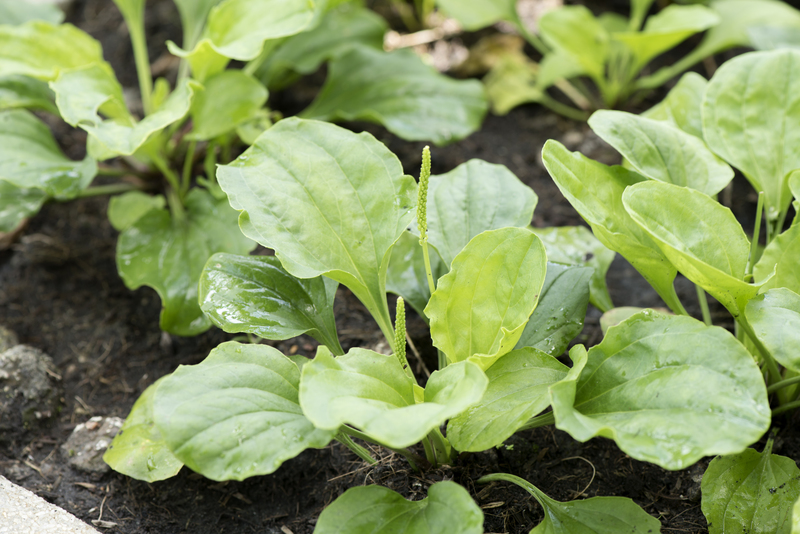Resurrection of the Neglected Garden: Where to Start
Posted on 01/06/2025
Resurrection of the Neglected Garden: Where to Start
Is your backyard more of a forgotten wilderness than a flourishing haven? Has your once-loved green space become overrun with weeds, tangled bushes, and abandoned dreams? The resurrection of a neglected garden is not only possible--it can be deeply rewarding. In this comprehensive guide, we'll show you exactly where to start in rejuvenating your overgrown or forgotten garden, so you can restore its beauty and reclaim your outdoor sanctuary.

Understanding the Scope: Evaluating a Neglected Garden
Before you dive into restoration, it's essential to assess the current condition of your garden. This first step will help you define the scope of your project and prioritize tasks for the successful revival of your abandoned garden.
Key Steps in Assessment:
- Walk Through Your Garden: Take notes on what's thriving, what's struggling, and what's died.
- Identify Structural Problems: Look for broken fences, collapsed beds, or torn pathways that need repair.
- Soil Health Check: Test patches of soil for compaction, pH, and moisture retention.
- Spot Invasive Species: Mark out large infestations of weeds or invasive plants you'll need to address.
- Sun and Shade Patterns: Observe how sunlight and shade shifts throughout the day--this will inform your plant choices later.
Pro Tip: Keep a garden journal or take photos. This will help you track your progress as you move from a neglected yard to a blossoming retreat.
Planning Your Garden Resurrection
An effective garden resurrection starts with a clear plan. Restoring a neglected yard can be overwhelming, but breaking down the process into manageable steps helps create a realistic timeline and keeps motivation high.
Define Your Vision
- What is Your Garden's Purpose? Do you want a food garden, a flower haven, or a tranquil space for relaxation?
- Preferred Style: Are you drawn to formal, cottage-style, or wild naturalistic gardens?
- Maintenance Level: Be honest about how much time you can invest moving forward. This will affect your plant and design choices.
Consider drawing a rough sketch of your dream garden. Include features like patios, beds, seating areas, and pathways. Reviving a neglected garden often means editing what's there as much as adding new elements.
Set Priorities
Avoid the trap of trying to do everything at once. Instead, rank tasks according to what's most urgent or will make the biggest impact. Typical priorities include:
- Removing dangerous or diseased trees and branches
- Clearing overwhelming weed growth
- Restoring access to pathways and garden infrastructure
- Establishing care routines for the most promising existing plants
Clearing and Cleaning: The Essential First Step
No matter your garden's state, cleaning up is non-negotiable. This step can be physically demanding, but it lays the essential groundwork for rebirth. Here's how you should approach the cleanup phase of the garden reclamation process:
Removing Large Debris
- Dispose of fallen branches, old equipment, trash, and other debris.
- Check for hazardous waste--like old chemicals or glass--and dispose of appropriately.
- If large trees or stumps need removal, consider hiring professionals.
Dealing With Weeds and Overgrowth
- Wear gloves and long sleeves if the vegetation is thick--brambles and nettles can sting!
- Start with the worst areas, pulling out weeds by the root whenever possible.
- Use a garden fork or hoe for tough patches. For extensive areas, a string trimmer may help.
- Compost healthy plant matter; discard diseased or invasive species safely to avoid spreading.
Taming the Lawn
- If the grass is waist-high, use a scythe or trimmer before mowing.
- Gradually reduce height over several sessions to avoid shocking the lawn.
- If too far gone, you might choose to reseed or even replace with wildflower meadow.
Remember: The cleaning phase might take several weekends for larger plots, but the satisfaction of seeing your outdoor space reborn is well worth the effort.
Soil Revival: The Foundation for Future Growth
The key to a successful garden restoration is healthy soil. Neglected gardens often have compacted, depleted, or weed-choked soil. Here's how to give your dirt new life.
Test and Amend Soil
- Purchase a simple home test kit or send samples to a local cooperative extension office for pH and nutrient analysis.
- If pH is off, add lime to raise or sulfur to lower it according to the recommendations.
- Add organic matter: Compost, well-rotted manure, or leaf mold will condition and revitalize depleted soil.
Aerate and Mulch
- Break up compacted areas with a garden fork or aerator.
- Cover beds with a thick layer of organic mulch--this suppresses weeds and gradually feeds the soil.
Deciding What to Keep: Saving Existing Plants
One secret of reviving a forgotten garden is not starting from scratch. Many mature plants--shrubs, trees, even bulbs hiding underground--may bounce back with basic care.
How to Save Existing Greenery
- Assess Each Plant: Is it healthy, or too damaged and diseased to save?
- Prune Dead or Broken Branches: Remove spent wood from trees and shrubs to stimulate new growth.
- Feed and Water: Apply organic fertilizer and water deeply to stressed survivors.
- Divide or Transplant: Overgrown perennials can be lifted, split, and relocated for a fresh look.
*Tip: Sometimes, what looks like a dead bush is simply dormant. Wait until spring before making a final decision.
Weed Management: The Long Game
Effective weed control is critical to the ongoing resurrection of a neglected backyard. After your initial big clear-out, stay vigilant.
Strategies for Sustainable Weed Management
- Mulch Regularly: Mulch prevents light from reaching weed seeds and retains moisture for your plants.
- Tackle Weeds Promptly: The younger you catch them, the easier removal will be.
- Consider Sheet Mulching: For large weedy areas, lay cardboard and compost to starve unwanted plants and build soil quality.
- Cultivate Cover Crops: "Green manure" crops like clover or rye suppress weeds and enhance soil fertility between seasons.
Replanting and Reimagining: Designing Your Restored Garden
Once your garden is under control, it's time for the fun part--replanting your revived garden! Consider starting small, focusing on manageable projects and "anchor" features before adding complementary plants.
Focal Points for Instant Impact
- Entryways: Define your main entrance with a decorative arch, gate, or colorful planting.
- Seating Areas: Create a simple patio or bench nook for instant usability.
- Feature Beds: Fill one or two main beds with a mix of easy-care perennials and annuals for visual impact and pollinator appeal.
Choosing Plants for Revival
- Start with Hardy, Low-Maintenance Varieties: Native plants, tough perennials, or shrubs like viburnum, lavender, or coneflowers need less pampering.
- Incorporate Pollinator Plants: Lavender, echinacea, and salvia draw bees and butterflies, turning your revived plot into an ecological haven.
- Use Containers: For particularly challenging soil areas, pots and raised beds can let you begin gardening immediately.
- Focus on Seasonality: Plan for interest in every season--spring bulbs, summer blooms, autumn foliage, and winter structure (like evergreens or ornamental grasses).
Don't rush to fill every space--gradual changes help you adapt and perfect your garden over time.
Ongoing Care: Ensuring Your Garden Remains Rejuvenated
Reviving a neglected garden isn't a one-time event. The true joy--and success--comes from consistent, simple maintenance. Here's what to focus on for sustaining your reborn backyard haven:
Simple Weekly Chores
- Watering: Deep, infrequent watering builds root strength; adjust frequency for seasonal rain.
- Mulching: Replenish mulch as it breaks down to nourish soil and suppress new weeds.
- Deadheading and Pruning: Snip spent flowers and keep shrubs shaped for ongoing bloom and structure.
- Weed Patrol: A quick check each week prevents overwhelming regrowth.
Seasonal Attention
- Spring: Plant new arrivals and fertilize; divide perennials if needed.
- Summer: Harvest edibles, monitor for drought stress, and stake tall blooms.
- Autumn: Rake leaves for compost, plant bulbs for spring, spread compost or manure.
- Winter: Prune dormant trees/shrubs, sharpen tools, and plan next year's projects.

Eco-Friendly Tips for Garden Resurrection
Turning a neglected space into a sustainable revived garden is not just better for wildlife--it's also easier on you.
- Encourage Beneficial Bugs: Install a bug hotel or leave small piles of sticks for pollinators and pest-eaters.
- Compost Garden Waste: Transform cleared plant material into free fertilizer for your revived borders.
- Capture Rainwater: Use water butts or barrels to collect runoff for garden irrigation.
- Create a Wildlife Corner: Let one small area remain wild, providing shelter and food for birds, hedgehogs, and frogs.
Conclusion: Your Step-by-Step Path to a Glorious Garden Revival
Transforming a neglected garden may seem daunting, but with the right approach and mindset, your outdoor space can become a source of pride and pleasure. Whether you're executing a full garden resurrection or just sprucing up a forgotten plot, remember these essentials:
- Assess and envision your garden reclamation project
- Set realistic priorities and tackle one step at a time
- Clean, clear, and restore soil before replanting
- Preserve what you can, and design for the lifestyle you want
- Maintain with simple, regular routines for lasting beauty
- Embrace eco-friendly practices for a resilient, living landscape
With patience and perseverance, the resurrection of your neglected garden will reward you with vibrant blooms, thriving wildlife, and a renewed connection to nature. Start today--every great garden story begins with that first small step.
Further Resources
If you're hungry for more tips and inspiration on reviving neglected gardens, check out local gardening forums, horticultural extension offices, or community garden groups. Sharing your journey and swapping advice is part of the joy of gardening--especially when you're bringing something beautiful back to life.

